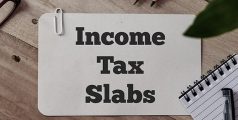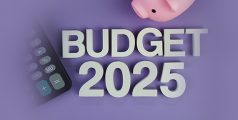
Difference Between New Tax Regime and Old Tax Regime
Posted on Tuesday, March 18th, 2025 | By IndusInd Bank
The Government of India introduced a new tax regime in the 2020 budget to simplify the tax structure. The current tax system allows taxpayers to choose between the old tax regime and the new one. Both regimes have different approaches to income tax calculation, with varying tax slabs and deductions. However, each tax regime offers specific benefits which the other does not.
In this article, we will break down the old vs new tax regime as well as look at other factors to help you choose the right one.
What is the Old Tax Regime?
The old tax regime refers to the traditional tax system in India. Within this regime, taxpayers can benefit from various deductions and exemptions to reduce their taxable income.
These deductions include investments in tax-saving schemes like the Public Provident Fund (PPF), National Pension Scheme (NPS), insurance premiums, and house rent allowances, among others. There is a progressive increase in the old regime tax slabs under this regime, where tax rates increase with income levels.
The old tax regime slabsare as follows:
| Income Tax Slab | Tax Rate (under 60 years of age) | Tax Rate (60-80 years of age) | Tax Rate (above 80 years of age) |
| Income up to ₹2.5 lakh | No tax | No tax | No tax |
| Income between ₹2.5 lakh to ₹3 lakh | 5% | No tax | No tax |
| Income between ₹5 lakh to ₹5 lakh | 5% | 5% | No tax |
| Income between ₹5 lakh to ₹10 lakh | 20% | 20% | 20% |
| Income above ₹10 lakh | 30% | 30% | 30% |
To better understand the old vs new tax regime, let’s also look at the new tax regime and its slabs.
What is the New Tax Regime?
The new tax regime was introduced in 2020. It lowers tax rates across various income levels. However, it removes the option to claim most exemptions and deductions. The new tax regime is also the default tax regime currently. The government introduced a few changes in Budget 2023 and Budget 2024 to make this regime more lucrative.
After Budget 2024, the new tax regime slabs are as follows:
| Income Tax Slabs for FY 2023-24 | Tax Rate | Income Tax Slabs for FY 2024-25 | Tax Rate |
| Income up to ₹3 lakhs | No tax | Income up to ₹3 lakhs | No tax |
| Income between ₹3 lakhs to ₹6 lakh | 5% | Income between ₹3 lakhs to ₹7 lakh | 5% |
| Income between ₹6 lakhs to ₹9 lakh | 10% | Income between ₹7 lakhs to ₹10 lakh | 10% |
| Income between ₹9 lakhs to ₹12 lakh | 15% | Income between ₹10 lakhs to ₹12 lakh | 15% |
| Income between ₹12 lakhs to ₹15 lakh | 20% | Income between ₹12 lakhs to ₹15 lakh | 20% |
| Income above ₹15 lakh | 30% | Income above ₹15 lakh | 20% |
Difference Between New and Old Tax Regime
Understanding the new vs old tax regime involves comparing the tax slabs and the benefits on offer. Here’s a summary of the key differences:
| Parameter | Old Tax Regime | New Tax Regime |
| Tax Slabs | Higher tax rates | Lower tax rates |
| Deductions/Exemptions | Multiple deductions and exemptions for various investments, expenses, and savings. These include deductions under Sections 80C, 80D, 80E, and house rent allowances. | Limited major deductions or exemptions. |
| Complexity | Complex due to various deductions | Simplified tax filing |
| Tax Planning | Requires structured tax planning | Considerably reduced tax planning needed |
| Savings Encouragement | Encourages savings through tax benefits | No incentives for opting for savings plans or schemes like PPF and NPS. |
When comparing the new tax regime vs the old tax regime, remember that both regimes have different benefits based on an individual’s financial habits.
What to Consider When Choosing Between New and Old Tax Regimes
When choosing between the new vs old tax regime, several factors should guide your decision:
1. Income Level
Assess your annual income and match it against the tax slabs of both regimes.
2. Investments
If you have significant investments in tax-saving instruments, the old regime may be better.
3. Financial Goals
Consider your financial objectives. This can include saving for retirement or creating a long-term investment plan. The old regime encourages disciplined savings through deductions.
4. Tax Savings
Use a tax calculator or consult with a financial advisor. This will help you compare the actual tax payable under both regimes before making a decision.
Also Read: Importance of Tax Planning in Building Long-Term Wealth and Maximising Savings
Conclusion
In conclusion, both the new tax regime and old tax regime offer distinct advantages depending on the taxpayer’s financial profile.
Just like choosing the right tax regime optimises your tax planning, the right savings account can work wonders for your daily financial management. If you are looking to optimise your finances, consider opening a Zero Balance Account with IndusInd Bank. A smart savings plan today can help you manage taxes while securing your financial future. Enjoy the benefits of competitive interest rates on Savings Accounts without worrying about minimal balance requirements.
Open a bank account now!
Disclaimer: The information provided in this article is generic and for informational purposes only. It is not a substitute for specific advice in your circumstances. Hence, you are advised to consult your financial advisor before making any financial decision. IndusInd Bank Limited (IBL) does not influence the views of the author in any way. IBL and the author shall not be responsible for any direct/indirect loss or liability incurred by the reader for making any financial decisions based on the contents and information.



 Offers
Offers Rates
Rates Debit Card Related
Debit Card Related Credit Card Related
Credit Card Related Manage Mandate(s)
Manage Mandate(s) Get Mini Statement
Get Mini Statement
 categories
categories Bloggers
Bloggers Blog collection
Blog collection Press Release
Press Release


